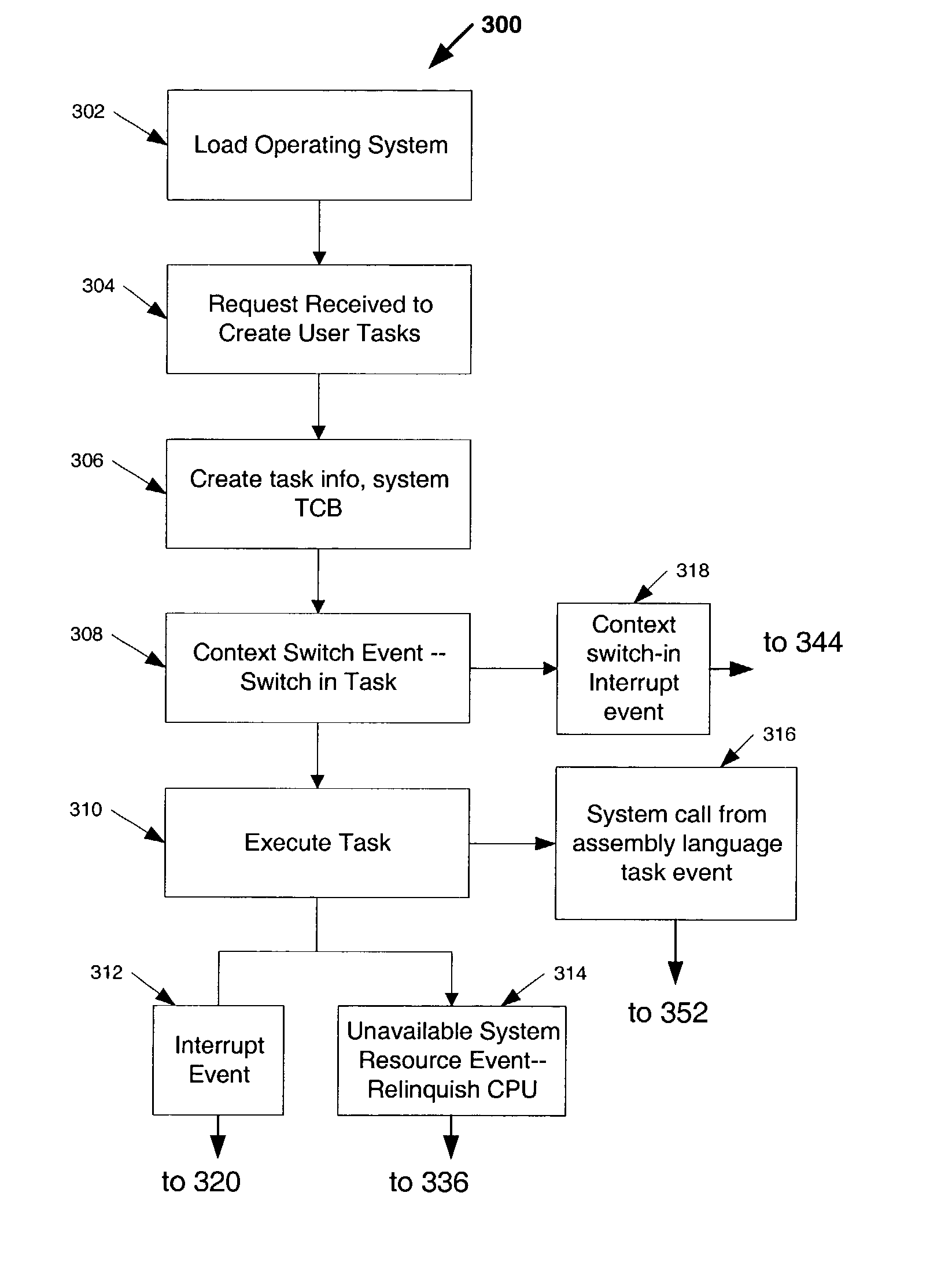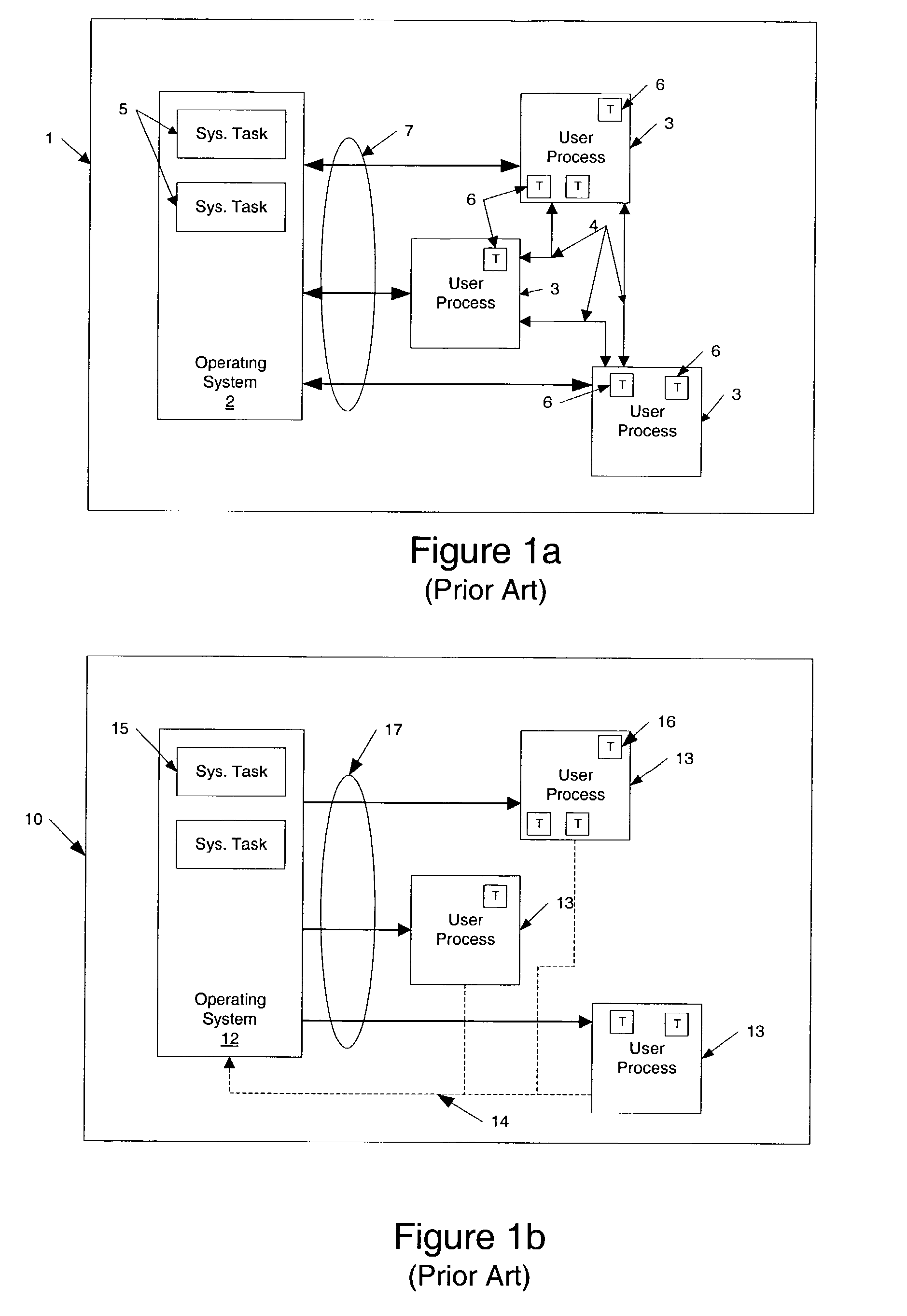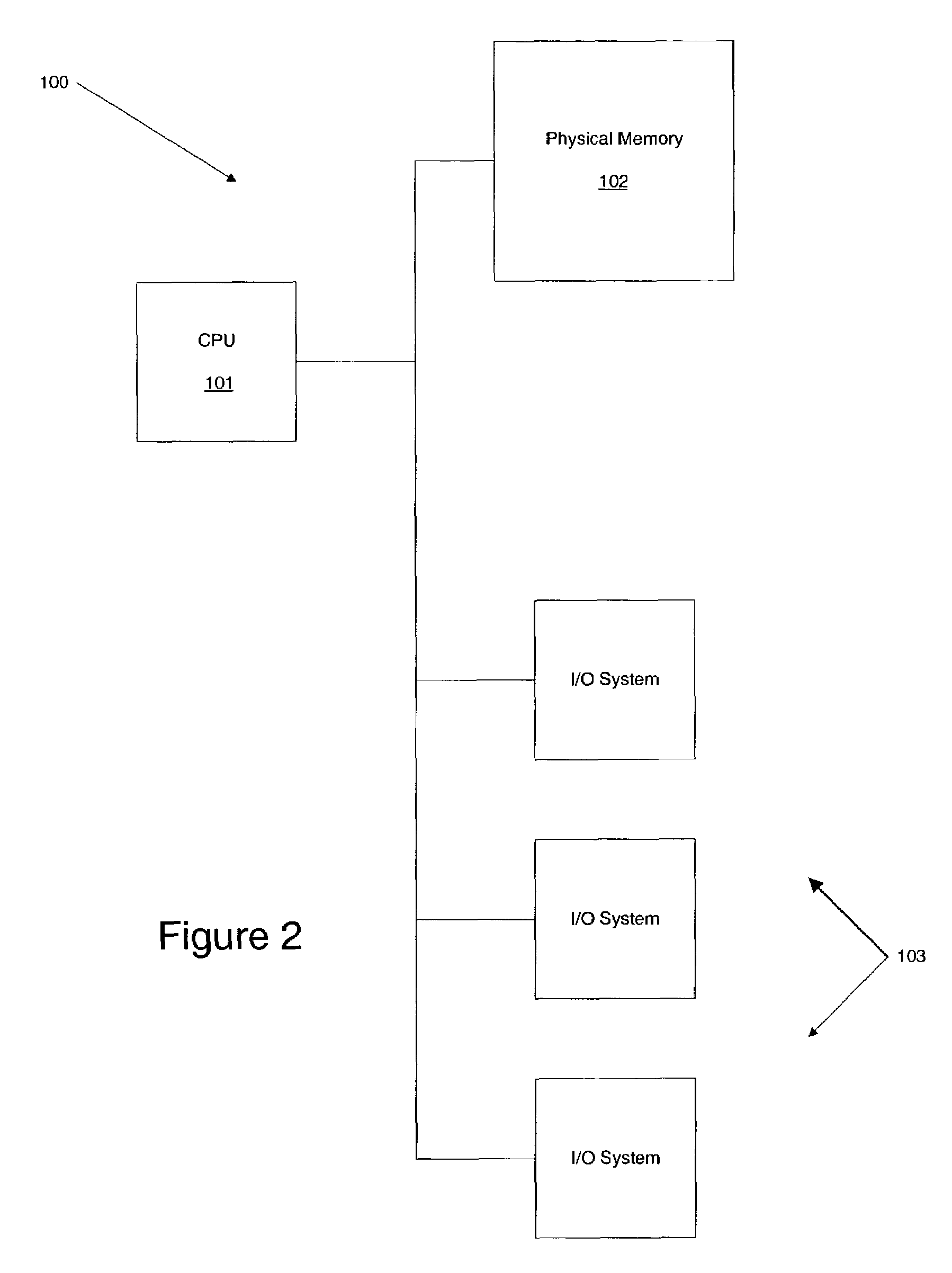Uniprocessor operating system design facilitating fast context switching
- Summary
- Abstract
- Description
- Claims
- Application Information
AI Technical Summary
Benefits of technology
Problems solved by technology
Method used
Image
Examples
Embodiment Construction
[0030]According to the present invention, an operating system that includes an improved task context switching structure is described. In the following description, for purposes of explanation, numerous specific details are set forth in order to provide a thorough understanding of embodiments according to the present invention. It will be evident, however, to one skilled in the art that the present invention may be practiced in a variety of operating systems that are protected and non-protected, real-time operating systems that are protected and non-protected, and computing systems, without these specific details. In other instances, well-known operations, steps, functions and elements are not shown in order to avoid obscuring the description.
[0031]Parts of the description will be presented using terminology commonly employed by those skilled in the art to convey the substance of their work to others skilled in the art, such as kernel, user memory space, system memory space, task co...
PUM
 Login to View More
Login to View More Abstract
Description
Claims
Application Information
 Login to View More
Login to View More - R&D
- Intellectual Property
- Life Sciences
- Materials
- Tech Scout
- Unparalleled Data Quality
- Higher Quality Content
- 60% Fewer Hallucinations
Browse by: Latest US Patents, China's latest patents, Technical Efficacy Thesaurus, Application Domain, Technology Topic, Popular Technical Reports.
© 2025 PatSnap. All rights reserved.Legal|Privacy policy|Modern Slavery Act Transparency Statement|Sitemap|About US| Contact US: help@patsnap.com



